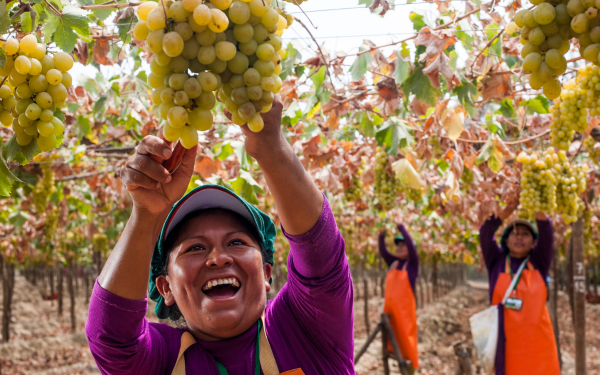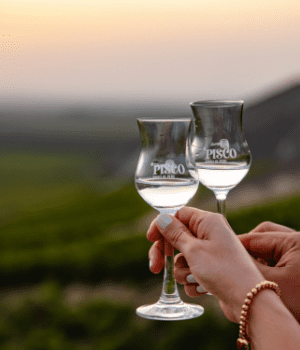If there is a spirit drink that is in the heart of every Peruvian, this is undoubtedly the pisco. Admired and awarded around the world for its exquisite flavor and aroma, pisco contains a lot of history and tradition. The aroma of pisco is the perfume of Peru and its flavor, the Peruvian pride in each sip.
Considered the flagship drink of Peru, it is usually present at every celebration, social gathering or accompanying a dish on the table. Such is that rootedness with the local society that it even has its own annual celebration. Every fourth Sunday of July, National Pisco Day is celebrated in the country. Even on this day, thousands of liters of this drink flow from the fountain in the Plaza de Armas in Lima for the enjoyment of all those present.
Pisco, recognized as Cultural Heritage of the Nation
The origin of this emblematic drink is found in the province with which it shares the name Pisco, the city of Ica, in southern Peru. There, the eight types of pisco grapes are harvested (Quebranta, Negra Criolla, Mollar, Italia, Moscatel, Albilla, Torontel and Uvina), distinguished by their unmistakable fragrances. The very term pisco dates back to pre-Inca times, when a caste of potters called piskos existed in the territory of what is now the Ica region. These were dedicated to the manufacture of conical vessels used to store and transport liquids. During the Colony, these utensils were used to preserve the grape distillate.
In 1988, pisco was recognized as Cultural Heritage of the Nation after carrying out a study on the Peruvian roots of this distillate that date back to the XNUMXth century.
Peruvian production
In the process of elaboration of the pisco, no other ingredient is involved besides the fresh must. This makes it possible to preserve the purity of the drink at its highest degree. Although its consumption dates back to when the Spanish brought the vine, in recent years its Peruvian origin has been claimed. The designation of origin has been created in order to standardize its production.
A group of engineers, agronomists and geologists carried out an investigation in which they demonstrated that pisco can only be produced in Peru. All this thanks to the fact that it has perfect rocks, sediments, relief and soil for the birth of this distillate. Currently, the pisco industry has more than 800 producers. For the most part, they maintain until today the ancestral methods for the elaboration process in various geographical areas of the country, such as Ica, Arequipa, Lima, Moquegua and Tacna.
The three types of pisco
Pisco grapes are classified into two large groups, the non-aromatic ones —quebranta, mollar, negra criolla and uvina. And the aromatic ones, italia, muscatel, torontel and albilla. With them you can produce three types of pisco:
- Pure pisco, obtained exclusively from a single variety of pisco grape.
- Mosto verde pisco is a distillation of musts whose fermentation has been interrupted. The tradition is to do it 3 or 4 days after the start of fermentation and at a temperature between 5° and 6° baumé.
- The pisco acholado, obtained from the mixture of two or more varieties of pisco grapes. It can be made by pressing the grapes together, joining fermented musts before distillation. Also making controlled tests of pure piscos until reaching the ideal "cut".

The unique flavor of Pisco Sour
Its mixture of intense flavors, its showy appearance and its strong aroma have made this delicious cocktail a tourist symbol of Peru and a product that can be exported to the world. This highly fresh cocktail was created in Lima in the 1920s by Víctor Morris, owner of the 'Morris' bar. Victor Morris first prepared this drink in the absence of a bourbon to make a whiskey sour.
Source: Promperú







